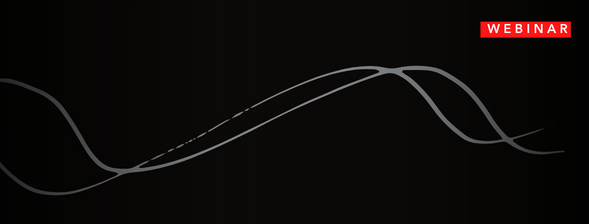For many “going paperless” sounds only like a clean desk policy: a means to reduce consumption of paper and present a tidy and well organised workplace. However, this is far from the core productivity revolution that going paperless can imply.
Paperless can mean accelerating the flow of activity through an organisation, reducing errors, reducing waste and dramatically enhancing customer service. In working with many of the region’s largest enterprises, Bevington Group has found that addressing these opportunities can reduce processing costs by up to 50%, while lifting customer performance metrics by hundreds of percentage points. But how is this so?
In this article I will describe the common techniques for lifting productivity by swapping paper for electronic flows. What you will see is that the actual removal of paper is not the core source of the productivity benefit, but rather a symptom of a deeper transformation. I will also describe some common pitfalls and, briefly, provide some advice for addressing those challenges. These opportunities will be addressed under two broad headings:
- the capture and processing of information; and
- the coordination of work.
The Capture and Processing of Information
I was talking to a client recently who shared a customer experience with a major, and reputable, bank. A loyal and valuable customer for 20 years, he was applying for refinance. In spite of this he was sent non-tailored forms which asked for information the bank already knew. Two weeks after submission he was told there was information missing from his application. After a further week, he received documents containing errors, forcing him to contact the bank. After another week the documents arrived again, with some of the errors remaining. His faith in the organisation was severely strained. From a customer perspective this process was far too long and frustrating. The story above highlights a number of opportunities for the bank in question, however let’s focus on those improvements that can be made by going paperless.
Applying for a loan (e.g. a mortgage or personal loan) is one of the most common financial service transactions. Often you need to fill in a paper form, which gets sent to a processing centre, where the information is keyed into a system, while the papers with your signature are scanned and stored. The information in the computer system is then used to process the request, which, if approved, results in documents being printed and sent to you for your signature, before you, sign and return them once more.
The problem with this chain of events is that it is prone to errors and delays. Firstly, it is extremely common for forms to be submitted incomplete or with incorrect information. According to Bevington Group statistics this regularly contributes to up to 40% of processing errors or delays. Secondly, data error entries arise where humans key information into systems. Thirdly, forms are poor at prepopulating information that you might already know (e.g. customer account details). Additionally, where undetected, problems can occur later in the process further frustrating the customer and causing delays (e.g. incorrectly keyed information ending up in final approval documents).
There is inherent waste in:
- printing contracts;
- checking their completeness;
- sorting them;
- putting them in envelopes (in the right order);
- sending them to the customer;
- following up with the customer where not returned in a timely manner;
- checking returned forms for correct completion and so on.
All of this is costly and slow, and most importantly, can be exceptionally irritating to the customer. There are three broad ways organisations can change:
- direct electronic capture of information from paper;
- direct entry of information into systems; and
- effective use of existing customer and reference information.
Firstly, organisations have been scanning information from paper for many years. However, the technologies and services are now very advanced, and services exist to scan characters off the page, check them, and index the form to a correct file. All of this means that the data capture part of moving from forms to a system can be faster, cheaper and is now less prone to errors (however, errors are still possible).
Secondly, and potentially more powerful, is direct electronic entry. For example, transport customers are increasingly being asked to sign for receipt on a screen not on a page. Even government services are now going this way, where fines can be paid online, and your Medicare claim lodged electronically from your GP’s office. The customer service and productivity benefits from this trend can be massive. Customers generally do not like forms. Capturing information directly onto a system with a sales person can remove considerable frustration. Then there is the error reduction. Customers do not need to learn how to complete a new form, and the sales person should know how to use the system. Furthermore, systems can check for potential gaps and errors at point of entry, which is far more difficult on a paper form.
Thirdly, the electronic approach can more effectively use existing customer and reference information. Pre-existing information need only be confirmed not rekeyed (e.g. address, earnings, asset and liabilities). Direct entries can also check against existing information to test for potential errors in what is being provided. Even more valuably, electronic entries can be transmitted to a central system and the customer can be given essential feedback right on the spot taking advantage of what the organisation already knows about you, for example whether the loan is instantly approved subject to conditions. Naturally this trend for online entry also extends to self-service. For example, we can now order our own simple insurance online, no forms, no paper and a rapid response.
However, for many organisations there are residual challenges. For example, the requirement for a physical signature, or a proof of salary, often complicates a potential paperless transaction. To take the next steps many organisations need to deal courageously with the legal and risk issues. They need to think like an online enterprise, asking the question “if it was impossible to use paper, how could we do this?” This is effectively what many airlines have done, creating a faster path for the customer by removing paper from booking, ticketing, airport arrival and boarding a plane, while at the same time reducing costs. To go completely paperless may mean reconceptualising some of the organisation’s sacred cows in terms of customer interaction and risk management, however while risks in the electronic age still need to be managed, they can be managed differently.
The Coordination of Work
In a sense the electronic capture of information is an obvious productivity benefit. We are all increasingly used to self-service online and are starting to think of paper based data capture as rather anachronistic. However, the ability to effectively coordinate, prioritise and allocate work by having information available electronically and applying programmed business rules is an enormously powerful next step. Once again, an example of “old way” may be illuminating.
Many organisations still operate what can be categorised as a “push and escalate” system of managing customer requests. In essence this means there is a whole level of management which allocates work (by judgement) to the appropriate personnel (“push”), and who manage the inevitable need to accelerate some work because of previous delays and errors (“escalations”). This sort of problem happens in many industries. For example, Bevington Group has found that hospitals often have thousands of hours of work effort each month dedicated to finding beds and services for patients, while in financial service organisations, 35% of front line leadership time can be committed to moving applications to staff members who can either correct errors or process complexities in a timely manner.
However, there is a much better way. It is possible to electronically prioritise based on information stored in systems about the request, application or transaction. It is also possible to sort different types of work into different grades of difficulty. Based on these two factors work can be allocated to queues based on complexity, and further, queues can be prioritised. This has enormous advantages. Queues can be serviced by personnel with the right level of skill and/or decision making authorities, saving valuable time in finding the right staff member to complete a piece of work, and also saving time wasted when staff members create errors because they have been allocated inappropriate work.
Furthermore, it is also possible to manage staff completely differently: when staff finish one piece of work they can simply take the next one from their queue. No more pushing of work to staff, instead staff pull their own work. As the queue is electronically sorted for priority then the next highest priority item is processed faster because it is taken by the next available appropriately qualified staff member. The performance of staff members can be supported by measures on speed and quality. This leads to a much faster and more efficient system.
This way of managing, is known as “streaming and pulling”. It incorporates the idea of different streams of work which are separately managed (because the processes and required skills are sufficiently different) and the idea of staff pulling work (avoiding management overhead). It does take very different thinking. However, it is becoming increasingly common based on three factors:
- it leads to much more efficient matching of staff skill to work type;
- it leads to a massive improvement in resource levelling, as multiple teams can service a small number of queues and take the next available transaction (rather than wait to be allocated a transaction); and
- it leads to reallocation of valuable management time away from pushing around work, for the system will do much of that for them.
Once again, this is not necessarily an easy transition. Whilst manual solutions are possible, and Bevington Group has certainly helped clients deploy these, there are many more benefits to be had from work queues that are electronically controlled. While the technology deployment often takes time, another factor affecting the speed of implementation is that of behavioural change. Managers are sometimes concerned that this type of approach will result in “gaming the system” with staff cherry-picking their next piece of work, or “going slow” by not pulling work when ready. However, a properly designed system will not allow this to happen, because staff can only pull the next piece of work they are qualified for, and velocity of work completion can be measured. Indeed, staff usually find this approach much better than facing a physical pile of unfinished files, and managers benefit from clearer performance information through quality metrics, and measures of processing velocity.
Business Process Improvement By Going Paperless
Many enterprises now have, or are developing, a digital strategy. However, the lesson from this article is that good strategy requires the ability to look at what is being done today through a different lens. There is a clear opportunity to examine your end-to-end value streams and ask the question “how could I do all of this without a single piece of paper?”
It is not just about the device interface, it is about how transactions flow and how work is managed. Most organisations can get to a decent customer interface, fewer have yet to get to paperless management of information, and fewer again have got to the point that work can be managed off the back of electronic information. Effective use of electronically captured details promises to enable new management practices which are better for customers, staff and the enterprise. Perhaps it is time to reflect properly on what it means to “go paperless.”
By Roger Perry – CEO Bevington Group





